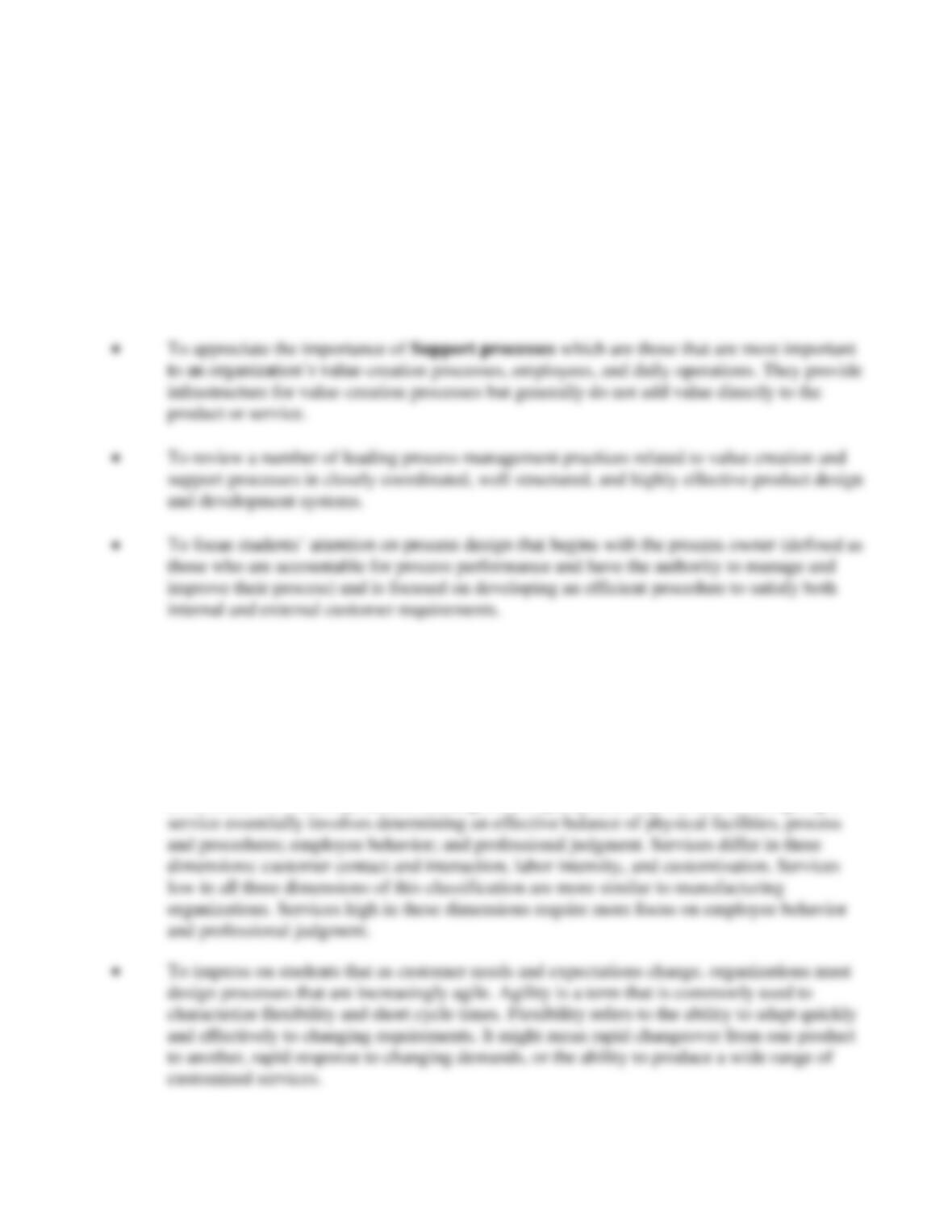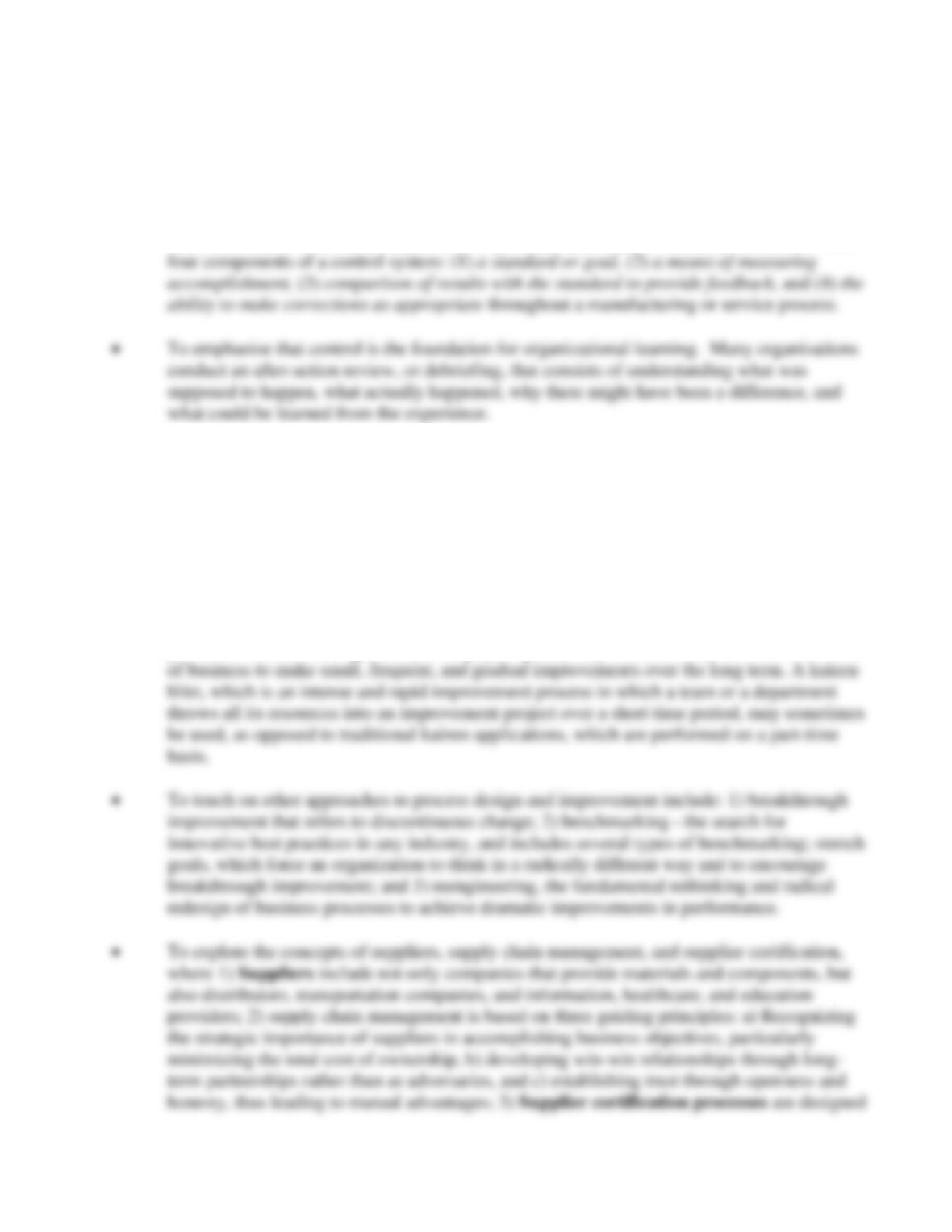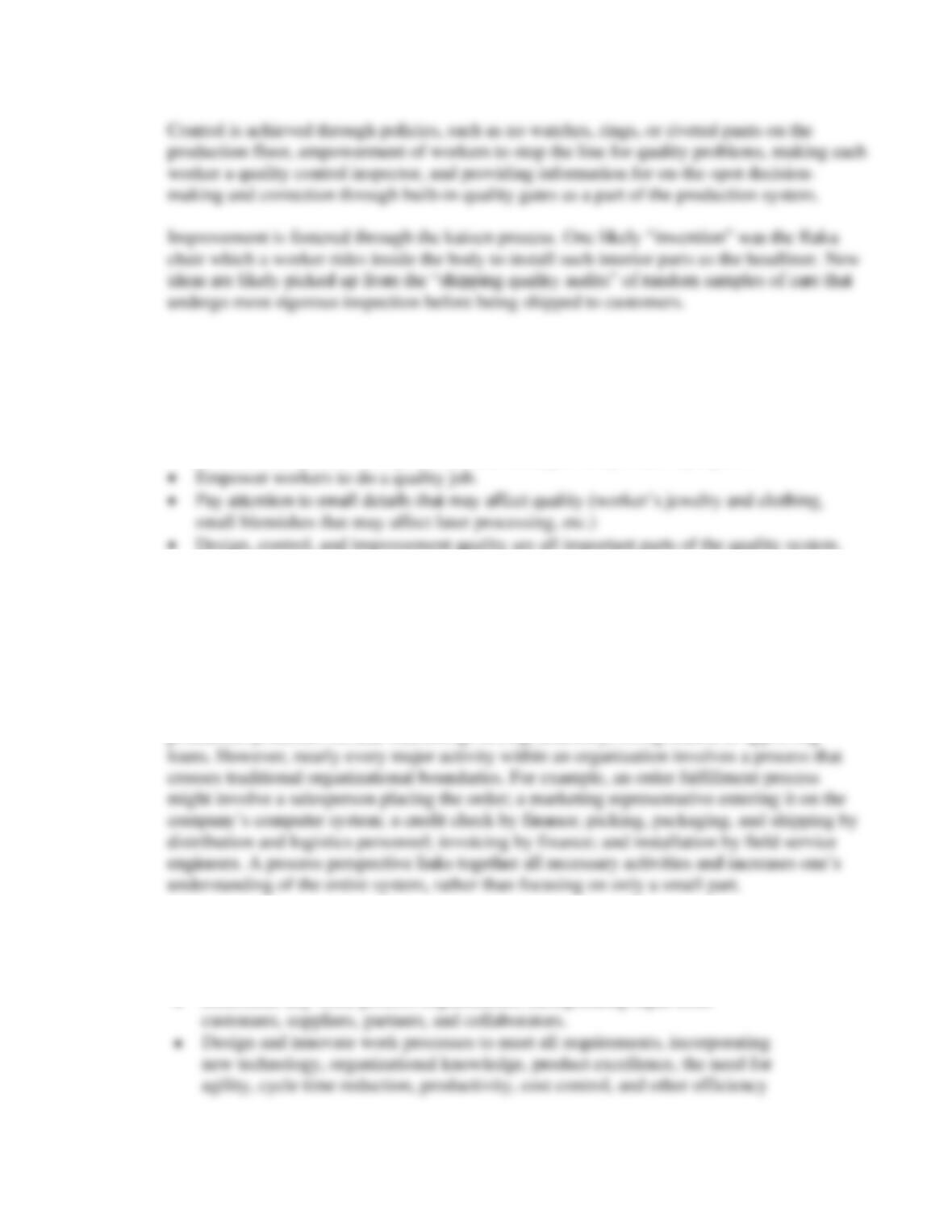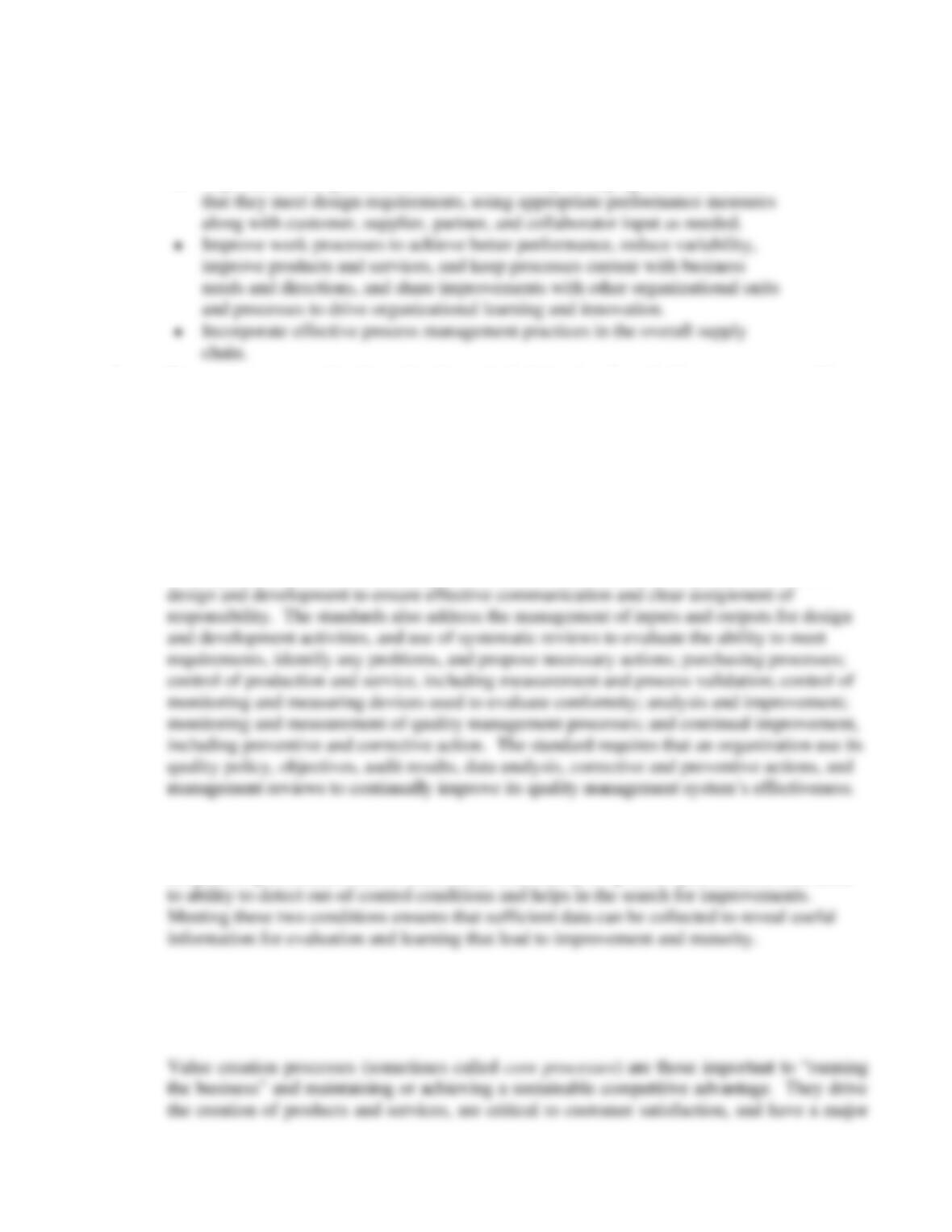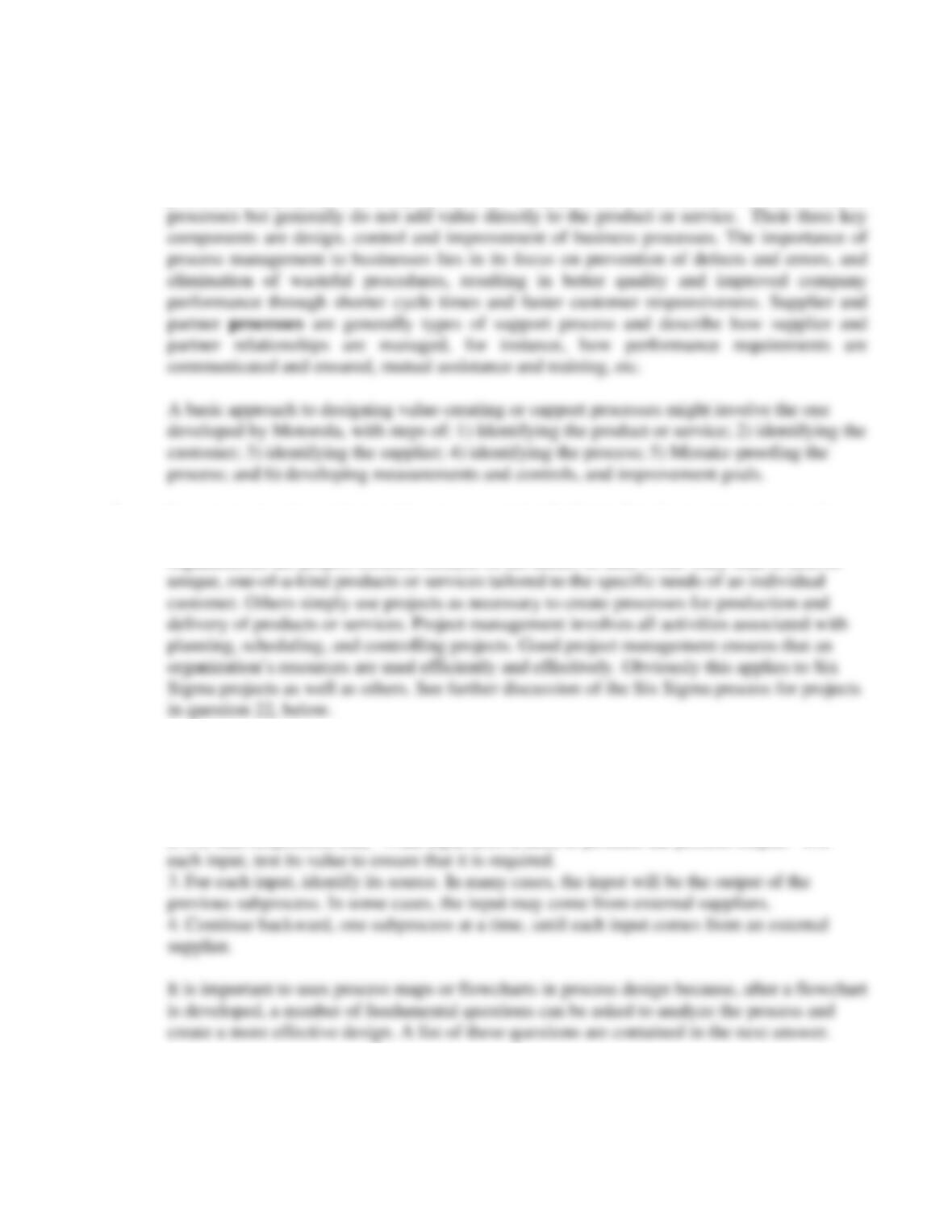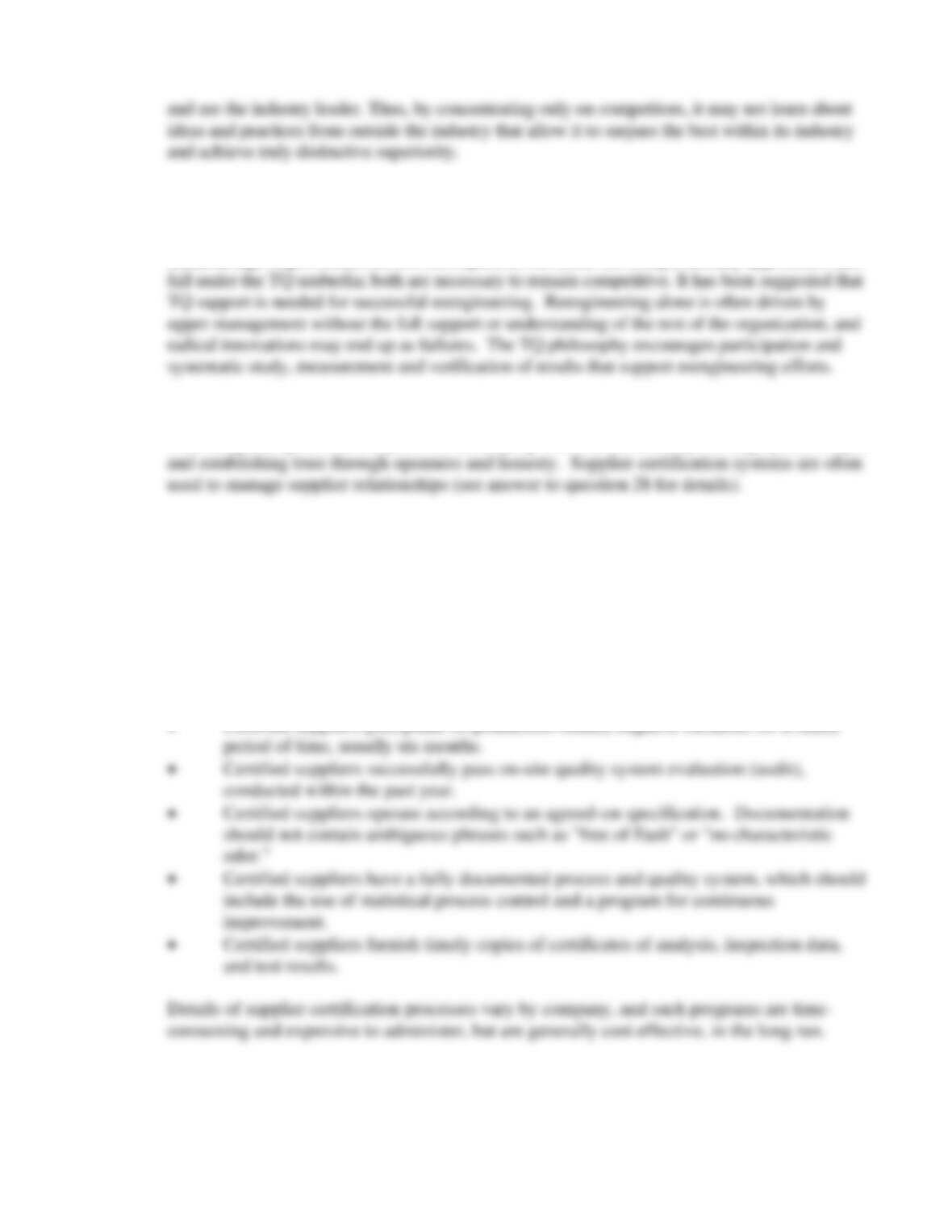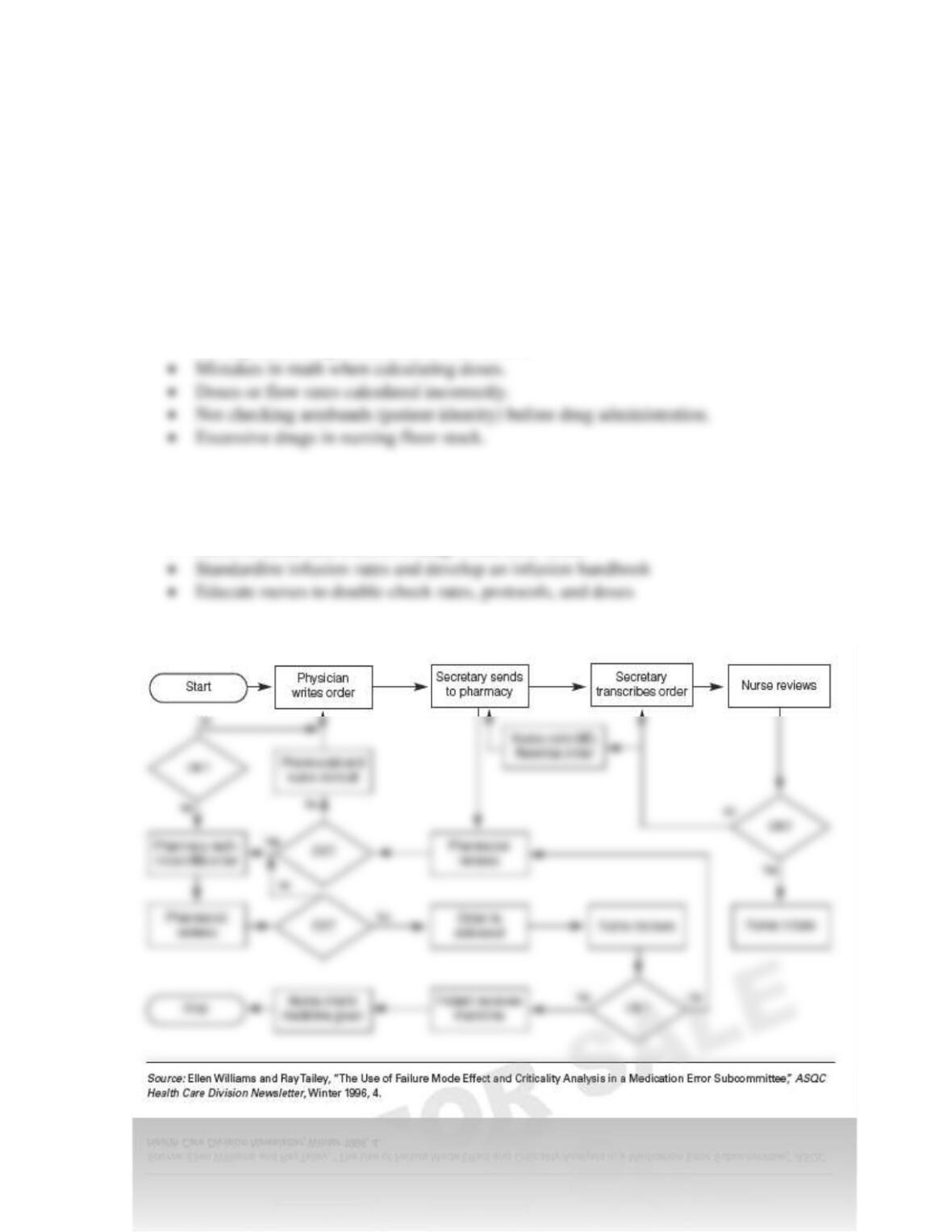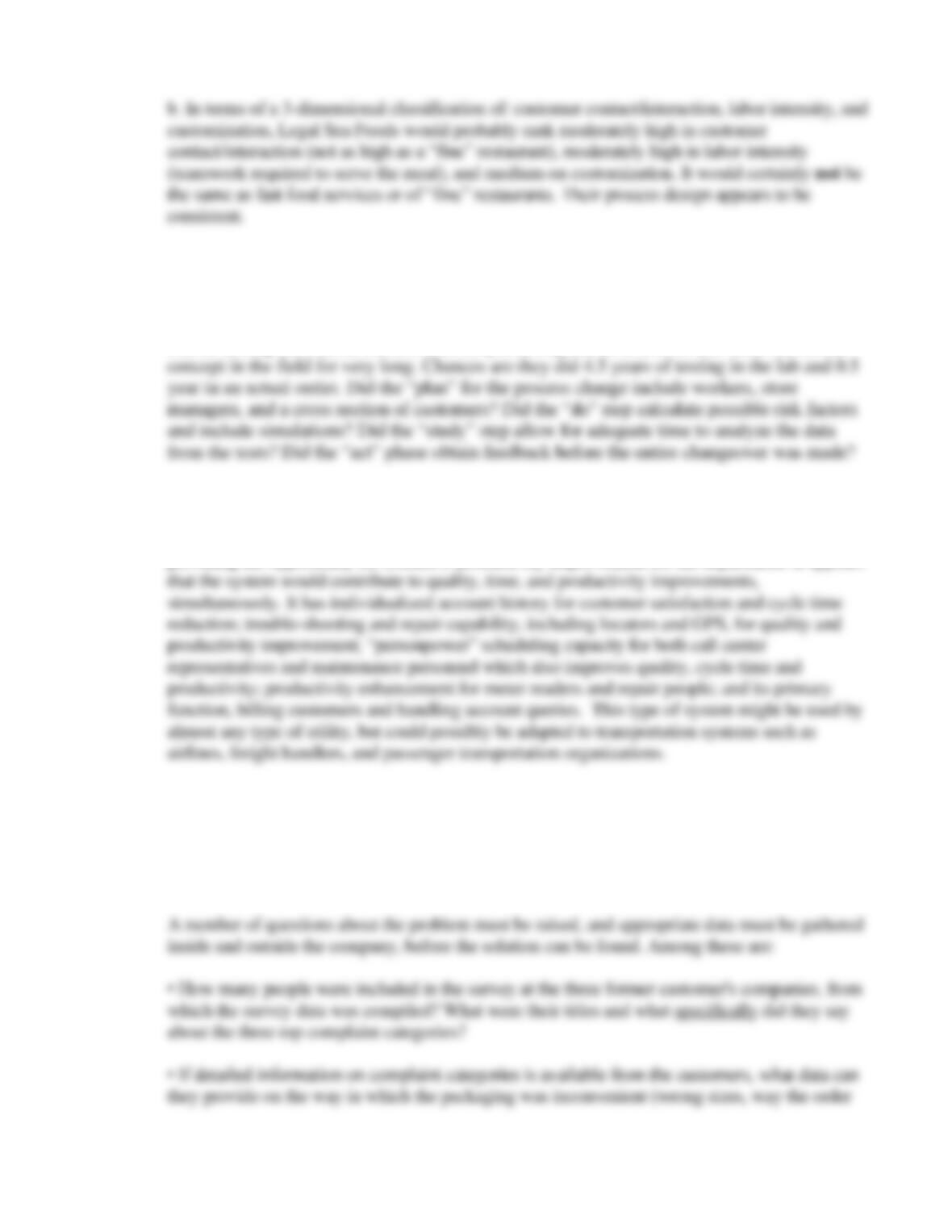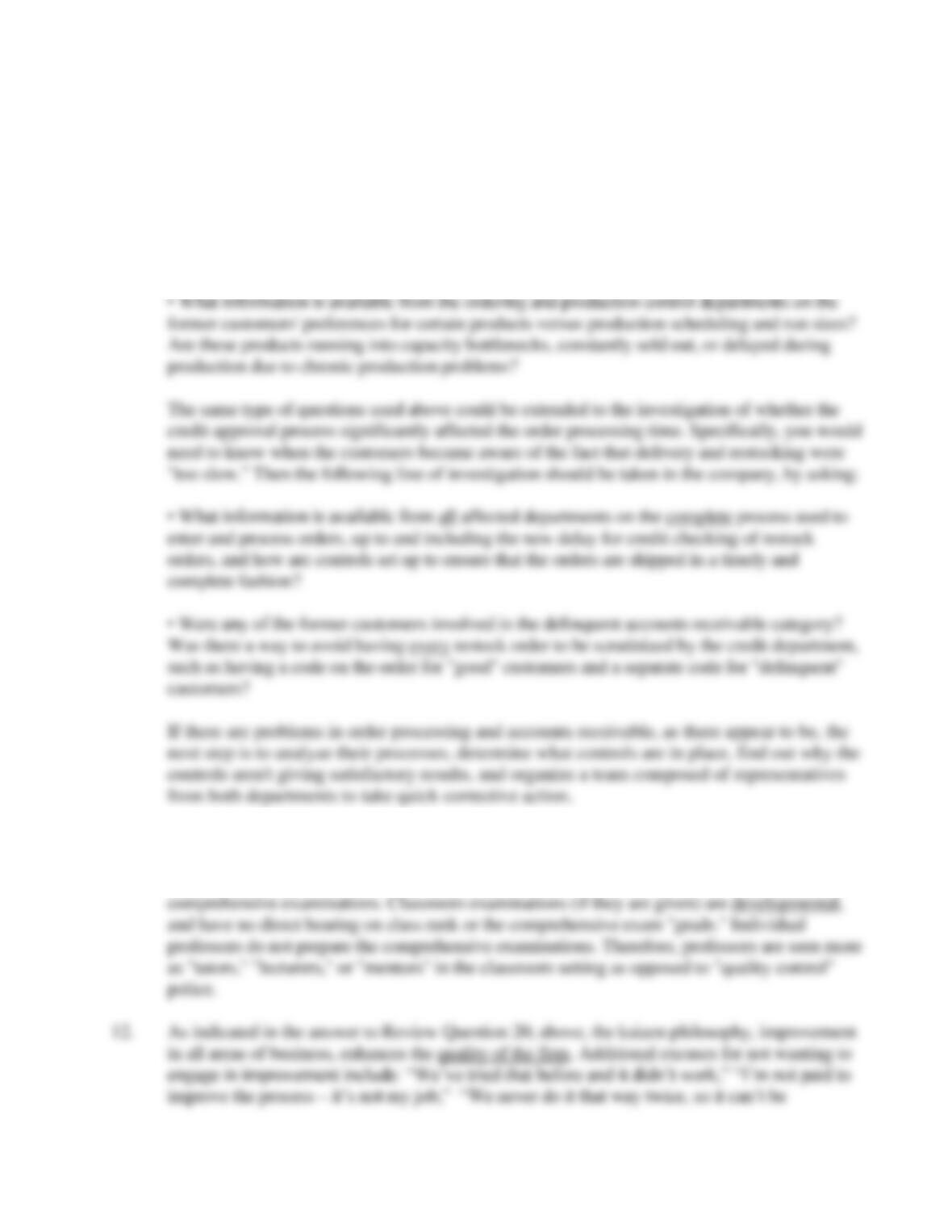Process Management 8
• Are the steps in the process arranged in logical sequence?
• Do all steps add value? Can some steps be eliminated and should others be added in order
to improve quality or operational performance? Can some be combined? Should some be
reordered?
• Are capacities of each step in balance; that is, do bottlenecks exist for which customers
will incur excessive waiting time?
• What skills, equipment, and tools are required at each step of the process? Should some
steps be automated?
• At which points in the system might errors occur that would result in customer
dissatisfaction, and how might these errors be corrected?
• At which point or points should quality be measured?
• Where interaction with the customer occurs, what procedures and guidelines should
employees follow to present a positive image?
For example, to determine if a process step has value, more detailed questions may be asked,
such as:
• Would the customer notice a loss of value if this step were eliminated?
10. The fundamental differences between manufacturing and service processes deserve special
attention. This is especially important because support processes are basically services, so
manufacturing firms invariably are also required to become involved in service delivery.
First, the outputs of service processes are not as well defined as are manufactured products.
Another way to think of this is that manufactured goods are tangible, service goods are (at
least to some degree) intangible. Second, most service processes involve a greater interaction
with the customer, often making it easier to identify needs and expectations. On the other
hand, customers often cannot define their specific needs for service until after they have
some point of reference or comparison.
Service process designers must concentrate on doing things right the first time, minimizing
process complexities, and making the process immune to inadvertent human errors,

